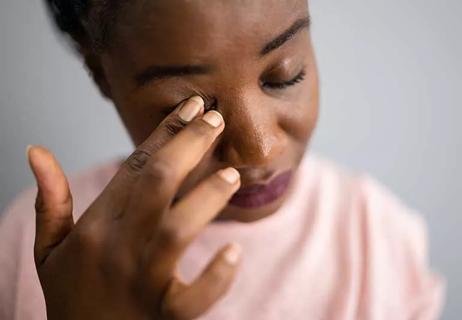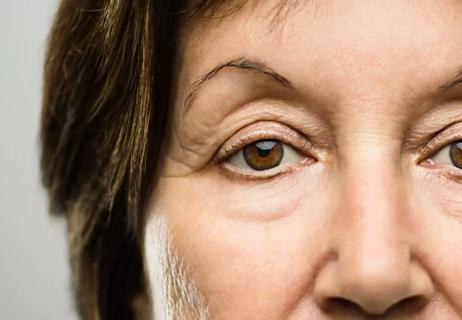This glaucoma drug can also thicken lashes, just note side effects

It’s rare for the same medication to be used for both medicinal and cosmetic purposes. But bimatoprost (also sold under the name brand Latisse®) pulls double duty. In addition to treating glaucoma, it can be used to grow and thicken eyelashes.
Advertisement
Cleveland Clinic is a non-profit academic medical center. Advertising on our site helps support our mission. We do not endorse non-Cleveland Clinic products or services. Policy
It’s effective for both purposes, but is it safe? Can it cause lasting changes to your eyes? The answer to both questions, according to ophthalmologist Julian Perry, MD, is yes.
“You must remember to follow the administration instructions as specified if you want to lower the risk of any side effects,” he says. “If you use it properly, you’re exposing the eye to only 5% of the drug as compared to the eye drop method used to treat glaucoma.”
On its own, bimatoprost is a prostaglandin – a fatty acid that has hormone-like effects on the body. As an eye drop medication, it’s used to treat glaucoma by relieving the pressure inside the eye.
It should be noted however that this fatty acid can cause light irises to become darker over the years. For example, it can cause permanent brown discoloration of the iris over months or years of use. Another side effect is known as periorbital fat atrophy – a hollowing-out appearance of the eyelids. This fat atrophy is permanent and can be severe, so you should stop using it immediately if you notice symptoms.
In an eyelash grower however, bimatoprost’s function and effects are slightly different.
Before application, wash your hands and face, removing any makeup. The solution is used once nightly and is placed at the roots of the upper eyelashes with a single-use applicator. It works by creating more hair follicles during the hair-growing cycle.
Advertisement
Latisse is approved by the U.S. Food and Drug Administration (FDA) for use on the upper eyelashes only. It may spread to the lower lashes as you blink, but the primary effect will be on the upper eyelashes only. Don’t worry if any medication gets into your eye, Dr. Perry says, as it’s used to treat glaucoma and is unlikely to cause damage.
Results usually appear within two months. If you stop using eyelash grower, your eyelashes will gradually return to their original state.
The FDA approved Latisse for eyelash growth in 2008, and it’s deemed safe for for adults. Because bimatoprost is the main ingredient, if you have glaucoma and are already treating it with medication, consult your ophthalmologist before using Latisse, Dr. Perry says.
In particular, mention if you’re already using latanoprost or travoprost. Using these drugs in combination with Latisse can increase treatment side effects.
While bimatoprost’s side effects are permanent used alone, when used in eyelash grower they can fade when you stop using the product, Dr. Perry says. Patients can experience eyelid itching, dry eye, eyelid darkening and bloodshot eyes. Eye and eyelid swelling, as well as some allergic reactions, are possible, according to the FDA.
More significant reactions include increased eyelash growth in the corners of the eyes and excessive eyebrow growth if the medication touches them.
Report any eye pain, infection or vision changes to your ophthalmologist immediately, Dr. Perry says.
If you wear contacts and want to use Latisse, you should know that the FDA warns that your contacts can absorb the product, which can discolor your contacts. Remove your contacts before you apply the solution, and wait 15 minutes before putting them back in.
Advertisement
Learn more about our editorial process.
Advertisement

Many factors, like eyelid irritation, cosmetic lash procedures and underlying health conditions, can affect your eyelashes

Both chalazia and styes appear as bumps on your eyelid — but styes are typically painful

Keep your eyes clean and try to stay makeup- and contacts-free to help move healing along

The procedures take different approaches to eliminate saggy, baggy skin around your eyes

Doing so can cause a severe infection, damage to your eyelid or even a corneal abrasion

Injections or surgeries can give aging eyes a lift

This diabetes medication can treat obesity, but it’s not for people who just want to drop a few pounds

The Yuzpe regimen is less effective than other forms of emergency contraceptives, and it’s associated with more side effects

Babies can get congested easily, but you can calm their cough by keeping them hydrated, using nasal drops and running a humidifier

Weight loss may cause loose, sagging skin and muscle loss to your rear

Several conditions, like vitiligo and fungal infection, can cause a loss of pigmentation, leading to white spots or patches on your skin